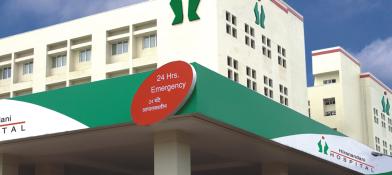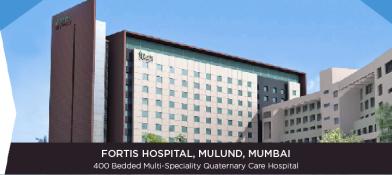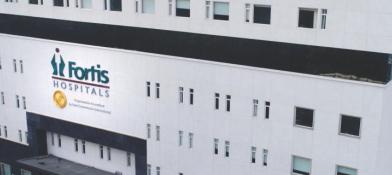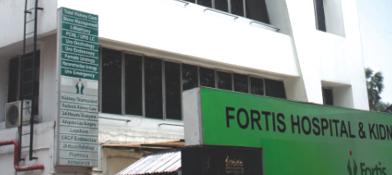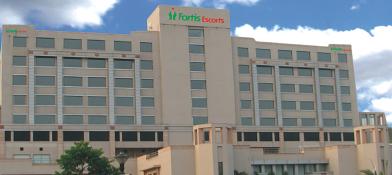Cardioversion
What Is Cardioversion?
Cardioversion refers to a treatment to get abnormal heart rhythm (arrhythmia) back to a regular pattern.
Types Of Cardioversions
There are two types of cardioversions:
(a) electrical cardioversion and
(b) pharmacological cardioversion (also referred to as chemical cardioversion).
- Pharmacological cardioversion is done by utilizing medication. Patients may swallow the medication or receive it through an intravenous infusion (also referred to as an IV). An IV is when medicine is directly injected into a patient’s veins.
- Pharmacological (or chemical) cardioversion can work in minutes, hours, or even days.
- Electrical cardioversion uses an external defibrillator to send controlled electric signals to the heart via electrodes (or sticky pads) placed on the chest. It is sometimes known as DC cardioversion or direct current cardioversion.
- Cardioversion is generally planned in advance. But sometimes, it may be done in an emergency setting with severe manifestations.
Need of Cardioversion
Patients may require cardioversion to bring heart rate and rhythm back to normal so a patient’s heart can pump like it should.
Abnormal heart rhythms can cause symptoms comprising:
- A pounding or fluttering feeling in the chest.
- Dyspnoea (Shortness of breath).
- Chest discomfort
- Dizziness or extreme tiredness
These symptoms are signs that the heart isn’t pumping sufficient blood to the patient’s body.
How to Prepare for Cardioversion?
- Healthcare professionals will give patients detailed instructions on what to do prior to cardioversion. They may ask patients to avoid eating on the day of the cardioversion procedure.
- Patients should attend appointments with little or no jewelry as they will ask patients to take it off.
- Patients should also avoid applying any oil or lotion on their chests.
- Patients should continue regular medication as usual unless healthcare asks the patient to stop.
- In some cases, patients might require having a transesophageal echocardiography test prior to cardioversion procedure to check for blood clots in heart.
What Happens During Cardioversion?
Cardioversion using drugs
Cardioversion can involve oral medicines or intravenous (IV) administration. The effectiveness of this treatment can differ, taking anywhere from minutes to days. Typically conducted in a hospital setting, the patient's heart rhythm is closely monitored during the procedure.
Cardioversion utilising drugs can be done outside the hospital. This treatment is most often utilised for people with atrial fibrillation that comes and goes. However, the patient will be required to be closely followed-up by a cardiologist.
Patients may receive anticoagulant medications to prevent the formation of blood clots in the heart, which could lead to a stroke if they were to break loose.
Electrical Cardioversion
While the patient is asleep, healthcare providers will utilize the cardioverter machine (defibrillator) to rapidly deliver specific amounts of energy to the heart through the cardioversion pads. The shock interrupts abnormal electrical rhythm and restores a normal heart rhythm. It may take several shocks to get rhythm back to normal, but it won’t be painful as the patient will be asleep.
Equipment healthcare team utilises during the procedure:
During cardioversion procedures, healthcare providers will monitor the patient’s vitals such as oxygen level, heart rhythm and blood pressure. They’ll utilize the following equipment:
- Cardioverter: Attached to adhesive pads positioned at the standard midpoint of the back and one on the chest. This allows healthcare teams to control heart rhythm rate and deliver energy to cardiac muscle.
- Electrocardiogram (ECG/EKG): Keeps track of patient’s heart’s electrical activity. Healthcare providers will attach several sticky patches (electrodes) to chest, and wires will carry the information to a machine that creates a graph.
- Blood pressure monitor: A cuff on the arm will inflate as well as deflate to keep track of the pressure inside blood vessels.
- Oximeter: A small clip-on finger estimates the quantity of oxygen in blood.
What happens after cardioversion?
Patient will slowly wake up post the procedure. Patient will be drowsy from the medication given by healthcare provider during the procedure. The patient’s chest may be tender for a few days. Hydrocortisone cream can offer some relief.
Once the patient is fully awake, the healthcare provider will talk to him/her about procedure results and plan of care. Patients may require medication to keep an abnormal heart rhythm from happening again.
What are the advantages of cardioversion?
Cardioversion returns a patient’s heart rhythm to normal and cuts down patient’s symptoms. Also, a patient’s heart may work better post-cardioversion.
What are the Risks of Cardioversion?
Potential Risks and Complications
While cardioversion is generally safe, it carries certain risks and potent complications, comprising:
If a patient has atrial fibrillation, blood clots can form in the patient’s heart’s left atrium. Cardioversion may knock loose a blood clot in the left atrium. If the clot reaches to the brain, it can cause a stroke. To avoid this, healthcare professionals may give medication (For instance, Warfarin) to make blood less likely to form blood clots. If the doctor provides the patient with the medication, the patient may require taking it for 3-4 weeks prior to the procedure. Transoesophageal echocardiography (TEE) is often utilized to check for the presence of blood clots prior to this procedure.
Complications are less common but may comprise:
- Allergic reactions to the medicines/drugs.
- Irritation of the skin on the chest or back where the electrodes were applied during the process of electrical cardioversion.
- A worsened arrhythmia will be required to be treated with medications, a pacemaker, or an implantable cardioverter defibrillator (ICD).
In a nutshell, cardioversion is a technique used to restore an irregular heart rhythm to its normal pattern. Whether conducted through electrical shock or medicines, cardioversion offers significant benefits and reduces the risk of complications linked with prolonged irregular heart rhythms.















